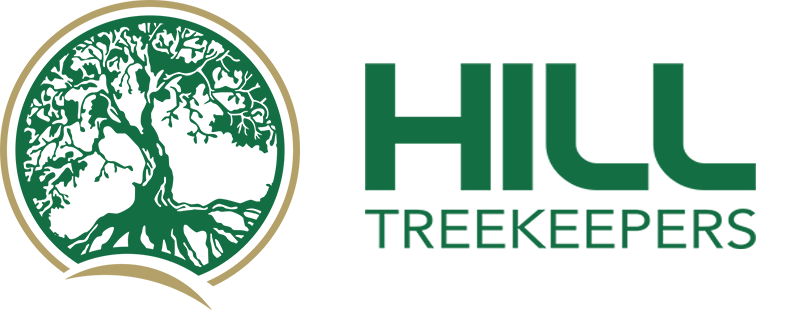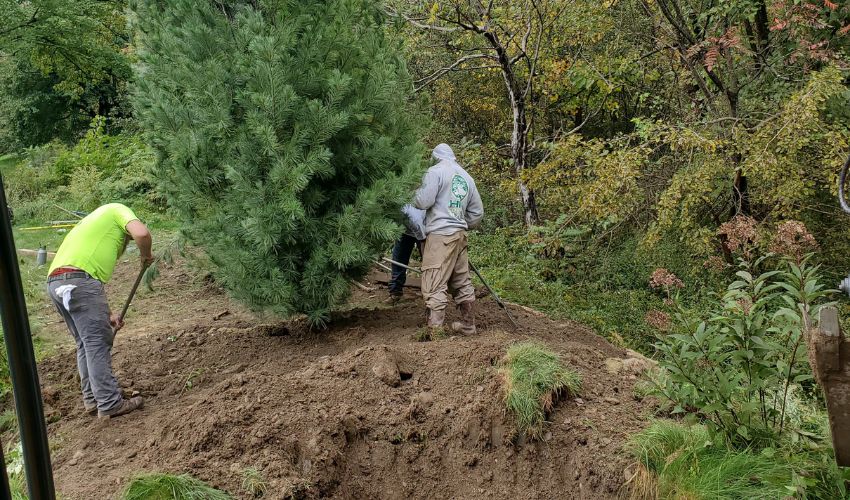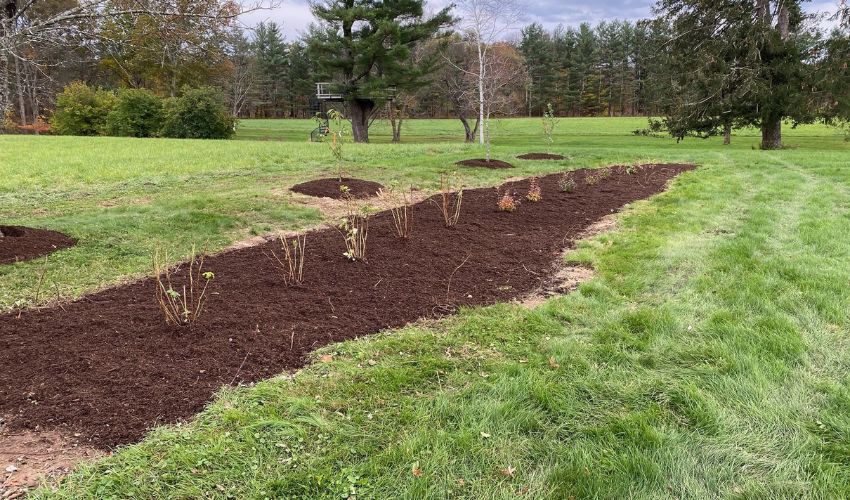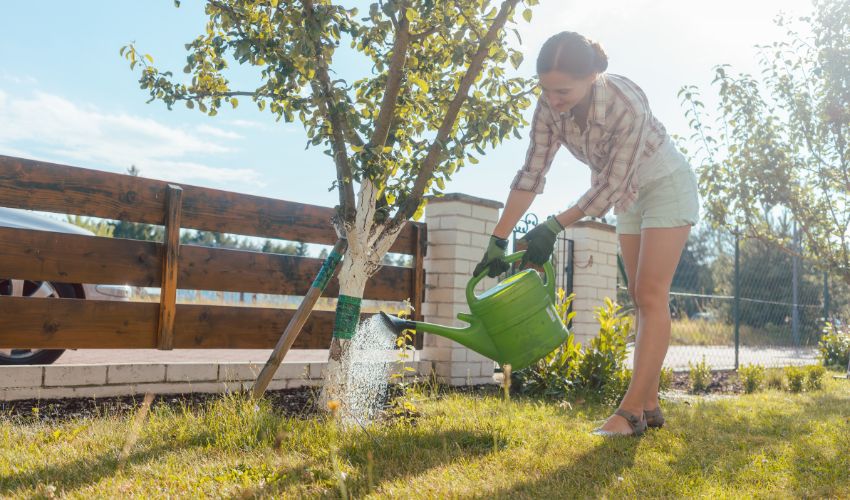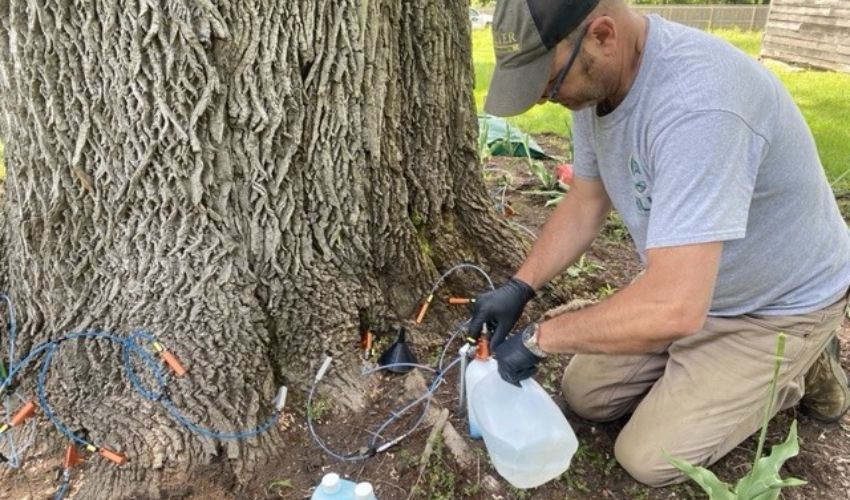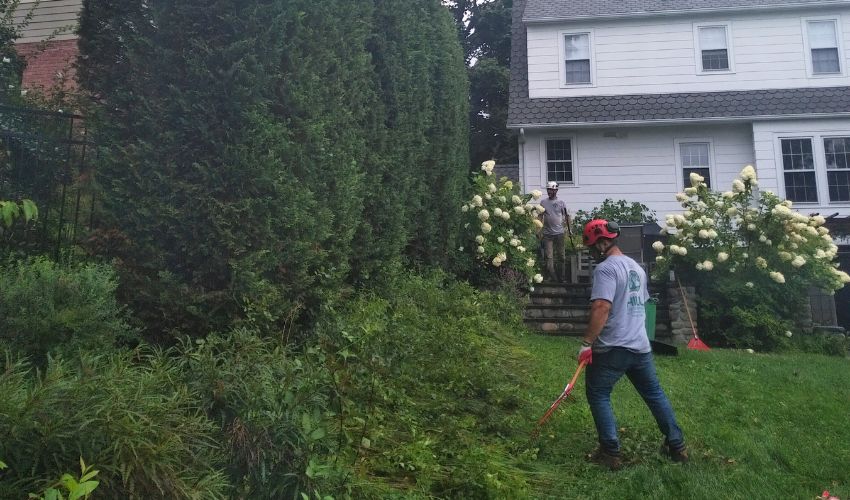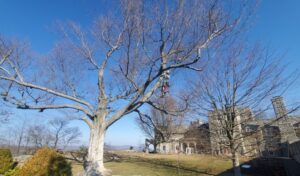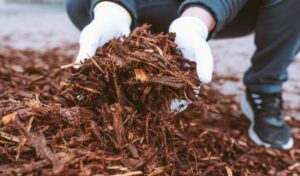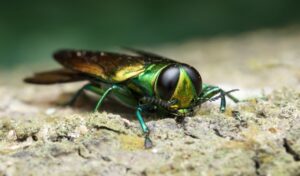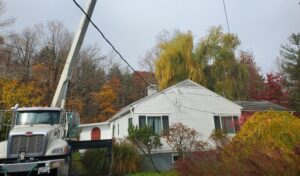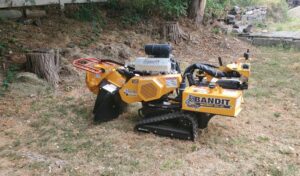
Spring in the Hudson Valley is a beautiful time of year, with trees, wildflowers, and shrubs in bloom, new growth appearing, and gradually warming temperatures. There are many changes during the spring season, and as a property owner, you may be wondering how best to care for your trees at this time of year. Keep reading to learn how to ensure your trees and property are healthy, beautiful, and thriving.
Inspect Your Trees
It may seem obvious, but looking closely at your trees and shrubs is one of the best things you can do for your property this spring. Look for potential issues, such as a lack of new growth, signs of pest infestation, or any part of the tree changing color. Some trees can suffer frost damage, especially if flowering trees bloom early. Other trees may have experienced frost cracks, vertical cracks in the side of the tree due to changing winter temperatures. If young trees are exposed to too much winter sun, they may suffer from sunscald. If you have winter protection on your trees or shrubs, now is the time to remove them and check for any animal damage or other issues.
Plant or Transplant New Trees
Spring and fall are the best times to plant any new trees on your property, although, depending on the weather, we have sometimes been able to plant trees in early winter as well. Planting during these times allows the tree roots to establish before the hot summer (or cold winter). Many property owners choose to plant new trees in spring as they can bring new life and color to the property. If you plan on adding new trees to your property soon, determine the correct location for the tree, plant it properly, and give it extra care until it is established. Let Hill Treekeepers handle your tree planting or transplanting.
Improve Your Soil Quality
Healthy trees come from healthy soil; spring is a great time to ensure that your trees have enough nutrients for spring growth. Spring fertilization, composting, and organic mulching around trees are ways to improve soil quality. Just make sure the mulch isn’t piled too high and doesn’t touch the tree’s trunk!
Water Your Trees
Watering may seem like a strange thing to do in spring, especially if there has been snowfall or rainfall recently, but there are two reasons for watering your trees in spring:
- Trees, especially young trees, need adequate water to support establishment and promote spring growth.
- Watering your trees can help leach salts out of the soil that may have ended up there from snow melt products. Irrigating the soil around your trees with one inch of water weekly for two to three months can flush out any salt that may have accumulated.
If your trees are near roads or traffic areas, you can spray the needles of your conifer trees and the branches of your deciduous trees with water to remove salt spray from nearby roads.
Protect Trees and Shrubs From Emerging Pests
As trees and plants return from dormancy, so do tree pests, some of which cause tree diseases. Preventing pest and disease issues is the best way to keep your trees and property healthy. Here in the Hudson Valley, there are several pests that emerge in the spring and can cause damage to your trees. Spring pests to look for in the Hudson Valley include:
- Spongy Moth – Formerly the gypsy moth, this pest has defoliated over one million acres of forest since 1980.
- Emerald Ash Borer — This is a bright green bug. Its larvae create S-shaped tunnels beneath the bark of trees. If not treated, they kill ash trees within two years.
- Eastern Tent Caterpillar – Look for the tell-tale silken nests in the branches. It attacks hardwood trees such as aspens, oaks, and sugar maples.
- Spruce Budworm — This destructive pest often attacks firs and spruce. The larvae hatch in the thousands. Proper pruning can reduce the outbreak of this pest.
- Hemlock Wooly Adelgid — If you notice a lack of new buds on your hemlock trees this spring, the hemlock wooly adelgid may be to blame.
Learn how Hill Treekeepers can help prevent pest and disease issues >>
Check for Tree or Plant Diseases
Along with tree pests, tree diseases can become more noticeable in the spring. Check for these signs of disease on your trees:
- Blotches or yellow or dark spots on the leaves
- Spotted or rotting fruit
- Fuzzy grey or white growth on the leaves
- Browning or dying conifer needles
- Dead or dying branches
- Oozing sores or cankers on trunk and branches
Learn more about how to prevent pests and diseases >>
Schedule Tree Pruning
Trees can be damaged during the winter by high winds, heavy snow, and ice. Look over your tree for broken or dead branches that need to be pruned out. If broken branches are not removed using proper pruning techniques, they may become dangerous during the next strong wind. Broken limbs are even more dangerous, as they could fall and harm your property (or a family member or pet!). Other trees may need a good spring clean-up through pruning or trimming. Some even benefit from pruning before new spring growth to help shape the tree. Learn more about Hill Treekeeper’s Pruning and Trimming Services >>
Contact Hill Treekeepers
If you are pressed for time, don’t know how to identify issues on your trees, or want a professional opinion, contact Hill Treekeepers to schedule a property inspection this spring. During an arborist consultation, we will check for any existing or emerging issues on your trees and property and advise you on the best steps to take, whether that be preventive treatments, selective pruning, or even removing dead, dying, or dangerous trees. Schedule a spring property inspection with Hill Treekeeepers today >>
Share this online!
Get the highest quality of tree services for residential and commercial properties in the Hudson Valley area. We look forward to working with you!
TOPICS
Recent Articles
Don't Miss the Next Update!
Join the thousands of smart Hudson Valley residents who get the monthly newsletter from Hill Treekeepers. It's full of helpful information you won't want to miss!
